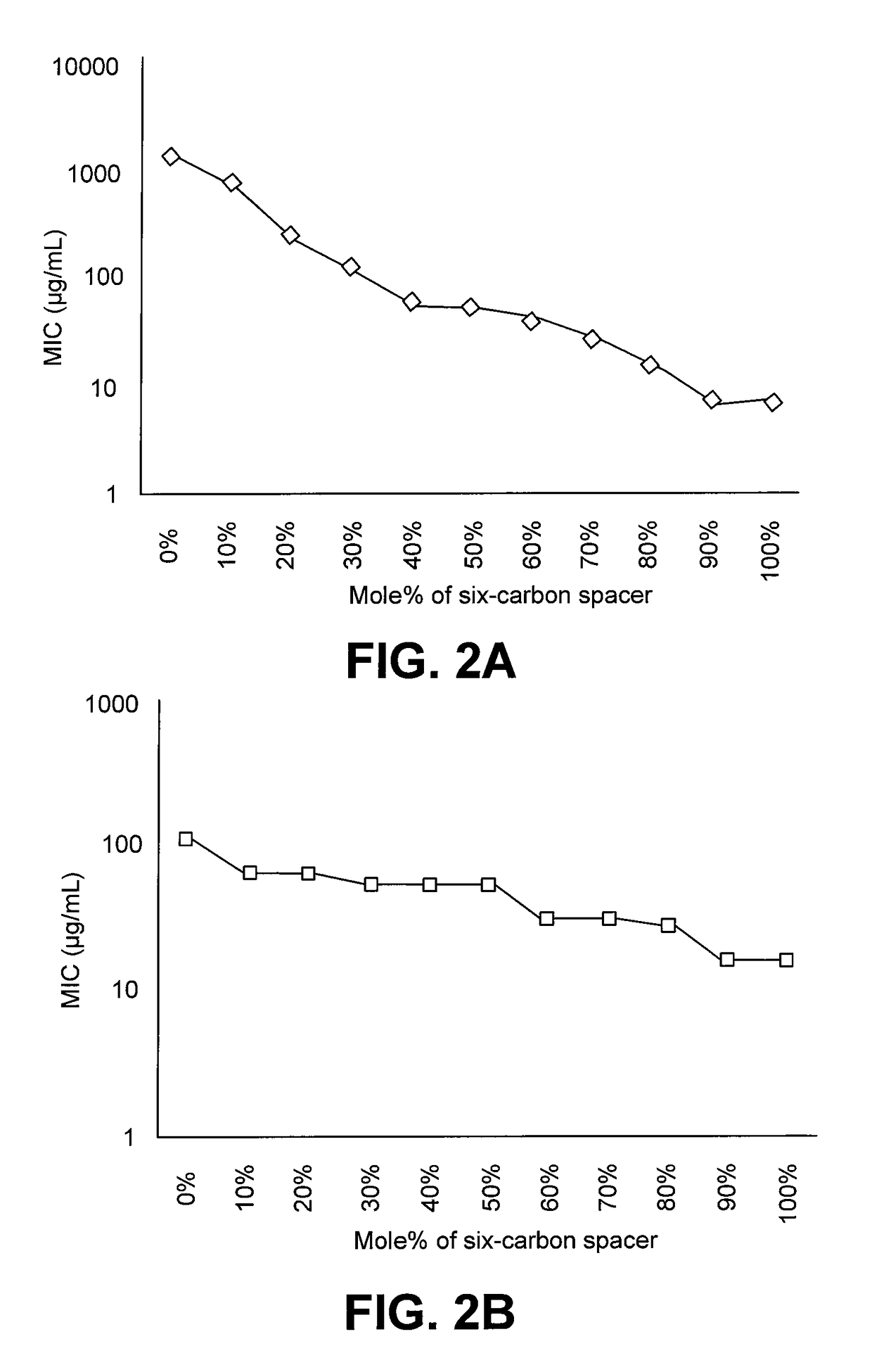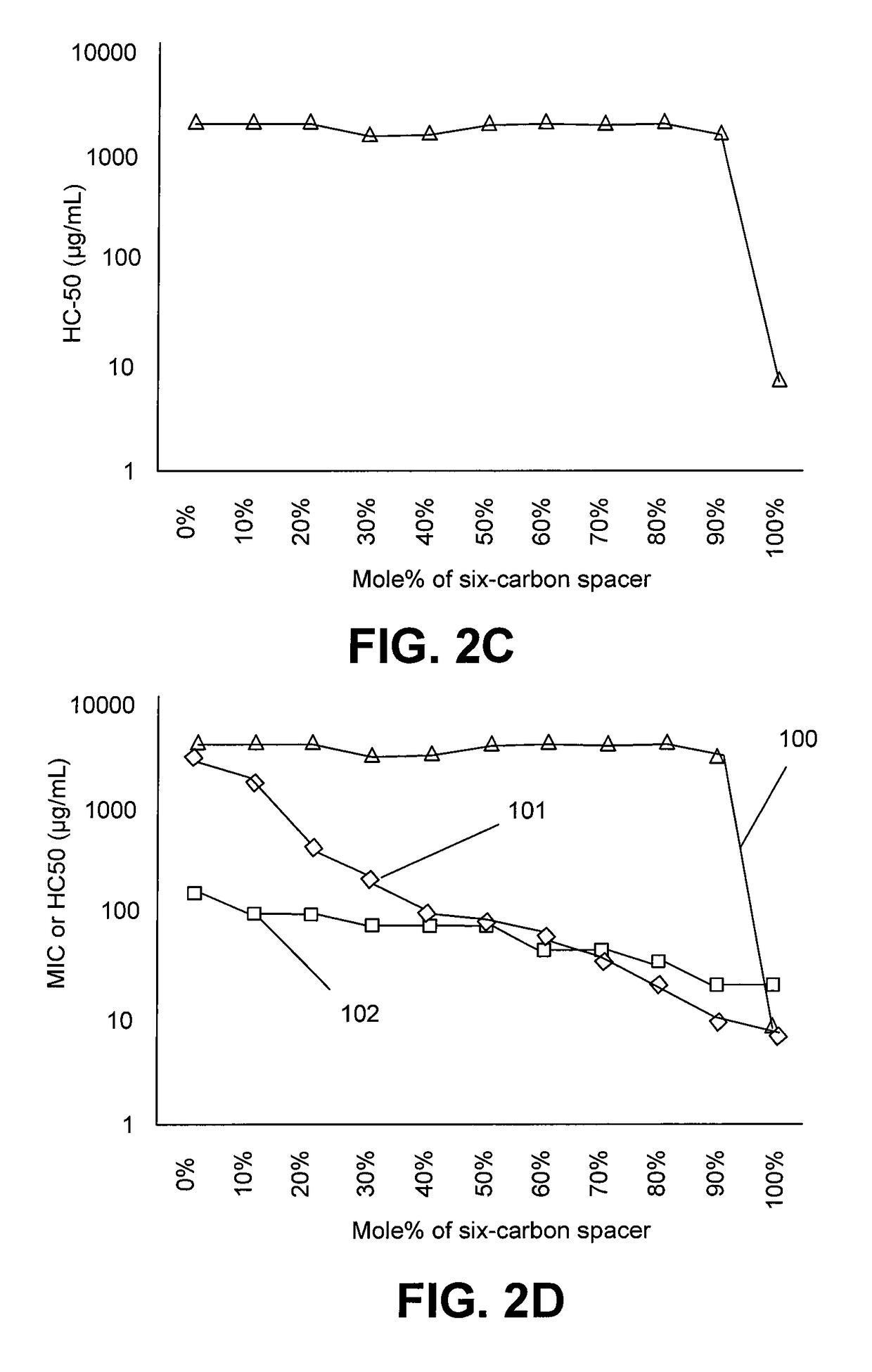Polymer with antibacterial activity
a technology of polymer and antibacterial activity, which is applied in the field of polymer with antibacterial properties, can solve the problems of antibiotic drug resistant bacteria, pseudomonas aeruginosa posing a serious clinical threat to people around the globe, and reducing the hemolytic activity of bacteria, so as to achieve significant antibacterial activity and reduce the effect of hemolytic activity
- Summary
- Abstract
- Description
- Claims
- Application Information
AI Technical Summary
Benefits of technology
Problems solved by technology
Method used
Image
Examples
Embodiment Construction
[0018]One of the major challenges towards therapeutic applications of amphiphilic polymers is their toxicity toward red blood cells (RBCs). Without wishing to be bound to any particular theory, hemolytic activity of synthetic amphiphilic polymers may arise from hydrophobic interactions between lipid membrane of erythrocytes and hydrophobic components of the amphiphilic polymers. Hence, reduction in hydrophobicity of polymers may lead to lower hemolytic activity. The presence of large number of cationic charges along with absence or lower number of hydrophobic moieties, as in cases of cationic homopolymers based on polymethacrylates, polynorbornenes etc, have been shown to reduce hemolytic activity, but higher number of cationic charge usually leads to lower antibacterial activity, especially against gram negative bacteria like E. coli. Reduction of hemolytic activity in alkylated poly(vinyl pyridine)s by the addition of hydrophilic groups like poly(ethylene glycol) have been reporte...
PUM
| Property | Measurement | Unit |
|---|---|---|
| molecular weight | aaaaa | aaaaa |
| molecular weight | aaaaa | aaaaa |
| molecular weight | aaaaa | aaaaa |
Abstract
Description
Claims
Application Information
 Login to View More
Login to View More - R&D
- Intellectual Property
- Life Sciences
- Materials
- Tech Scout
- Unparalleled Data Quality
- Higher Quality Content
- 60% Fewer Hallucinations
Browse by: Latest US Patents, China's latest patents, Technical Efficacy Thesaurus, Application Domain, Technology Topic, Popular Technical Reports.
© 2025 PatSnap. All rights reserved.Legal|Privacy policy|Modern Slavery Act Transparency Statement|Sitemap|About US| Contact US: help@patsnap.com



